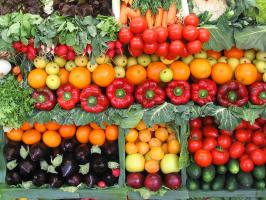Introduction
Potted plants are a great way to decorate your home or garden, but they require proper care and attention to thrive. One of the most important aspects of caring for potted plants is preserving moisture. In this article, we will explore some of the best things to put on potted plants to help them retain moisture.
Mulch
Mulch is a great way to preserve moisture in potted plants. Mulching involves spreading a layer of organic material on top of the soil, which helps to retain moisture and prevent soil erosion. Some of the best materials to use as mulch include shredded leaves, grass clippings, and straw. These materials are readily available and can be easily applied to your potted plants. Simply spread a layer of mulch on top of the soil around your plants, taking care not to cover the stems or foliage.
Pebbles or Stones
Another effective way to preserve moisture in potted plants is to add a layer of pebbles or stones to the bottom of your plant pots. This layer of rocks will help to retain moisture by providing a drainage layer, which will allow excess water to drain out of the soil and away from the roots of your plants. This will help to prevent waterlogging, which can lead to root rot and other problems. You can also add a layer of pebbles or stones on top of the soil around your plants to help retain moisture.
Water-retaining Gel Crystals
Water-retaining gel crystals are a type of hydrogel that can help to preserve moisture in potted plants. These crystals are made of a water-absorbing polymer that can absorb and hold up to hundreds of times its weight in water. When added to the soil in your plant pots, these crystals will slowly release water over time, helping to keep your plants well-hydrated. Water-retaining gel crystals are available at most garden centers and can be easily applied to your potted plants according to the manufacturer's instructions.
Composting
Composting is another effective way to preserve moisture in potted plants. Composting involves adding organic matter to your soil, which helps to improve soil structure and nutrient content. This will help to retain moisture, as well as provide your plants with essential nutrients. You can create your own compost by collecting vegetable scraps, leaves, and other organic materials, and allowing them to decompose in a compost bin. Once your compost is ready, you can mix it into your potting soil to improve its moisture-retaining properties.
Conclusion
Preserving moisture in potted plants is essential for their health and vitality, and there are many ways to do it. By using mulch, pebbles or stones, water-retaining gel crystals, and composting, you can help to ensure that your potted plants remain well-hydrated and healthy. Experiment with different techniques to find the method that works best for you and your plants, and enjoy the beauty and benefits of a thriving indoor or outdoor garden.

 how many times do yo...
how many times do yo... how many planted tre...
how many planted tre... how many pine trees ...
how many pine trees ... how many pecan trees...
how many pecan trees... how many plants comp...
how many plants comp... how many plants can ...
how many plants can ... how many plants and ...
how many plants and ... how many pepper plan...
how many pepper plan...































